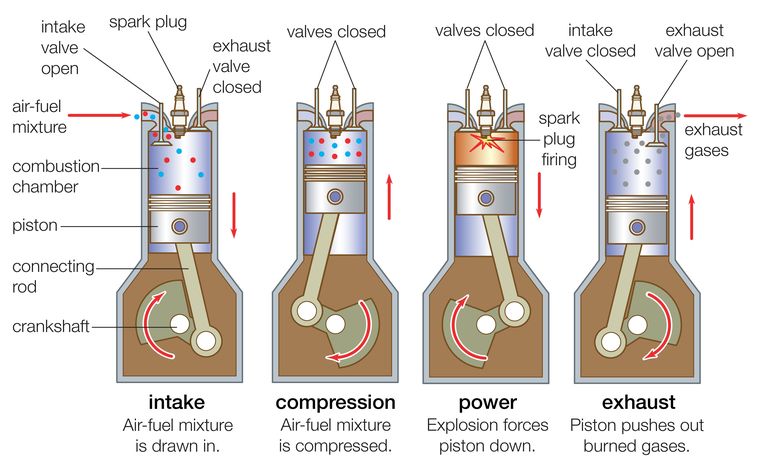How does it work? |
Four-stroke engine
Most engines are made up of cylinders with pistons inside that are connected to the crankshaft, which links up with some more pieces that eventually turn the wheels. These types of engines work in a 'four-stroke' cycle to take chemical energy in the gas or fuel mixture and transfer it to thermal energy, which is then changed to mechanical energy used to turn the wheels.
- In the intake stroke, fuel enters the combustion chamber. Oxygen is necessary for combustion, so the fuel is either premixed with air or directly added during the compression stage. Atmospheric pressure is much higher than pressure inside the combustion chamber, which allows the fuel mixture to push down the piston until completely filling the cylinder.
- In the compression stroke, both valves are closed and the piston compresses the air-fuel mixture until a spark plug ignites the source, creating an explosion. Compressing the mixture reduces volume, and you might remember from chemistry that Boyle's Law tells us P1V1 = P2V2, so pressure must increase. Pressure is force over a given area, P = F/A, meaning the air molecules rub against each other more in compression and this generates friction, or additional energy, to the reaction.
- In the power stroke, a spark plug ignites the air-fuel mixture and combusts. The expansion of burning gasses pushes the piston back down and work is done to turn the crankshaft and, eventually, turn the wheels.
- In the exhaust stroke, an exhaust valve opens to pump the exhaust fumes out of the engine and out the tailpipe, resetting the whole cycle.
